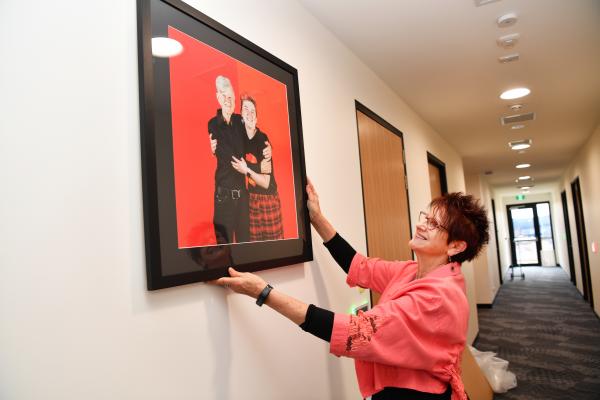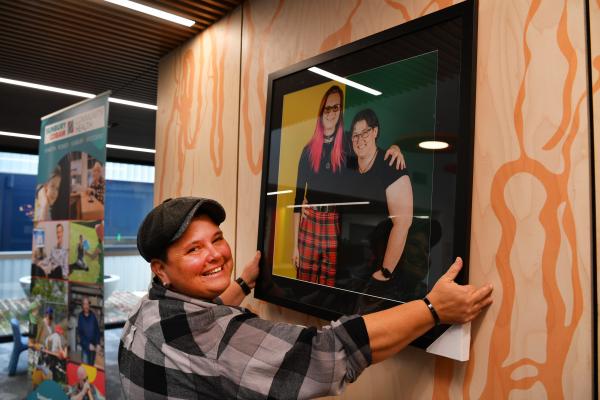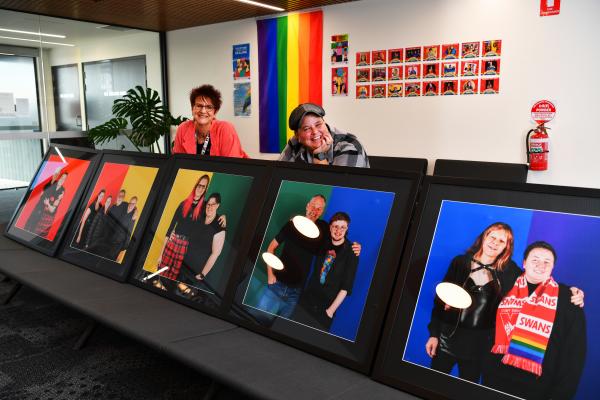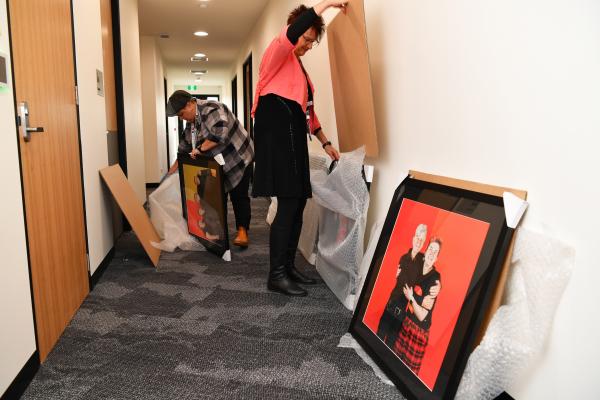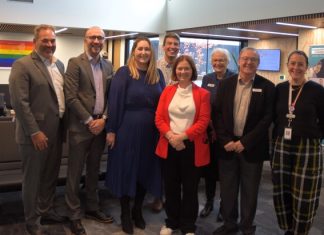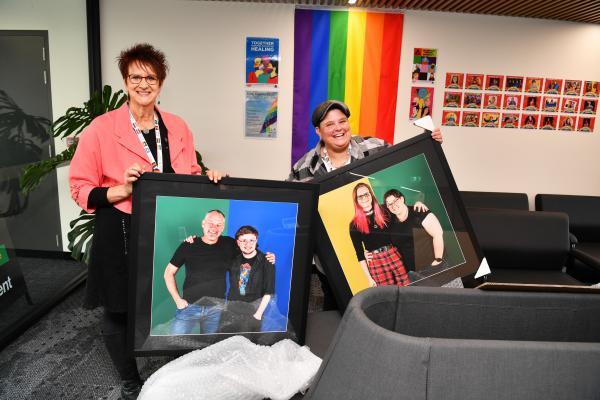
By Oliver Lees
In the Macedon Ranges, a new project is connecting queer people across the generational divide.
Funded by the Australian government’s Regional Arts Fund and facilitated by Sunbury and Cobaw Community Health’s (SCCH) WayOut program, the Rainbow Bridges project provides a forum for young and old members of the LGTIQA+ community to share their experiences.
SCCH project worker B usually specialises her work toward people more than 25 years of age, but said the idea to create an intergenerational program came after consulting her colleague, Mez, who typically runs programs for the youth.
“We felt it was important to bring people together and do something really meaningful,” B said.
“There are few organised situations in which older and younger LGBTIQA+ people have the opportunity to come together and build a sense of shared belonging.
“We wanted to give people positive role models, so that younger people could learn LGBT history from older people and vice versa.”
The project began in 2019 as younger individuals were paired with older counterparts.
After being disrupted through 2020 during the coronavirus lockdown, the program resumed and the pairs started to meet again.
The project wrapped up with the creation of a photographic exhibition and video clips that highlighted the connections they had made.
Mez said the final product did the project justice.
“Across the board what was reflected in the film was the respect they had for each other, the reciprocity of it all was really important,” Mez said.
“Everyone came together with an understanding and willingness to participate.
“And that was captured really well, I think many were actually surprised about how much they got out of the process and all of the interviews were quite different.
“I think ultimately they felt seen.”
As an older participant, Drew can attest to the value of the project.
“In some ways there were a lot of commonalities,” he said, explaining his experience of getting to know the younger participants.
“Obviously some of the cultural change is enormous.
“I think that’s absolutely wonderful, the fact that most families accept homosexuality and that was demonstrated with the Yes vote.
“But for kids that feel different, there are no obvious role models, so in order to grow up with a sense of belonging you have to find your queer peers, and that’s the same today as it was for me.
Living in Bendigo in the 1970s, Drew lived with his partner and was open about his sexuality at a time when homosexuality was illegal.
He attended St Paul’s Cathedral in the area, but said he decided to leave after feeling unwelcome.
“On one occasion, the Vicar pulled me aside and told me I was living in sin,” Drew said.
“I thought to myself, this seems to be more of a problem for you than it is for me, and I left.”
Decades later, Drew was welcomed back into that exact church group.
In 2019, Drew married his partner, Noel, who is a member of the clergy at St Paul’s Cathedral in Bendigo.
“I’m accepted by that community now,” he said.
“It’s quite bizarre, the church that I was estranged from is now something I love and am a part of, but it just shows how much things have changed.”
Noel, who was also a participant in the program, said he had a much different experience, as he only came to terms with his sexuality later in life.
“Once I realised, I had this terrific feeling of knowing who I am,” he said.
“I’m now physically, spiritually and emotionally free, and I know I can fully love myself because I know who I am.”
After running for two weeks at the Old Auction House, the photographic exhibit has been shifted to the SCCH office in Kyneton, where it will stay on permanent display.
The project was celebrated with a private opening where participants, project workers and friends and families were invited to view the works.
Younger participant and Sunbury resident Brittany said it was valuable to hear of the experience of others.
“I thought watching the other interviews that it turned out brilliantly,” she said.
“How much people [in the past] had to lean on each other and the fact they didn’t have as many safe spaces.
“My friends have had quite safe spaces in comparison.”
Looking ahead, Mez said this project was just the beginning.
We have learnt so much and we definitely want to do more intergenerational things,” she said.
“We recognise the importance of creating connections between community members.”
The photographs can be viewed at the SCCH office at 1 Caroline Chisholm Drive, Kyneton from 9am to 5pm Monday to Friday.
To view the Rainbow Bridges interviews, visit: www.sunburycobaw.org.au/rainbow-bridges/


